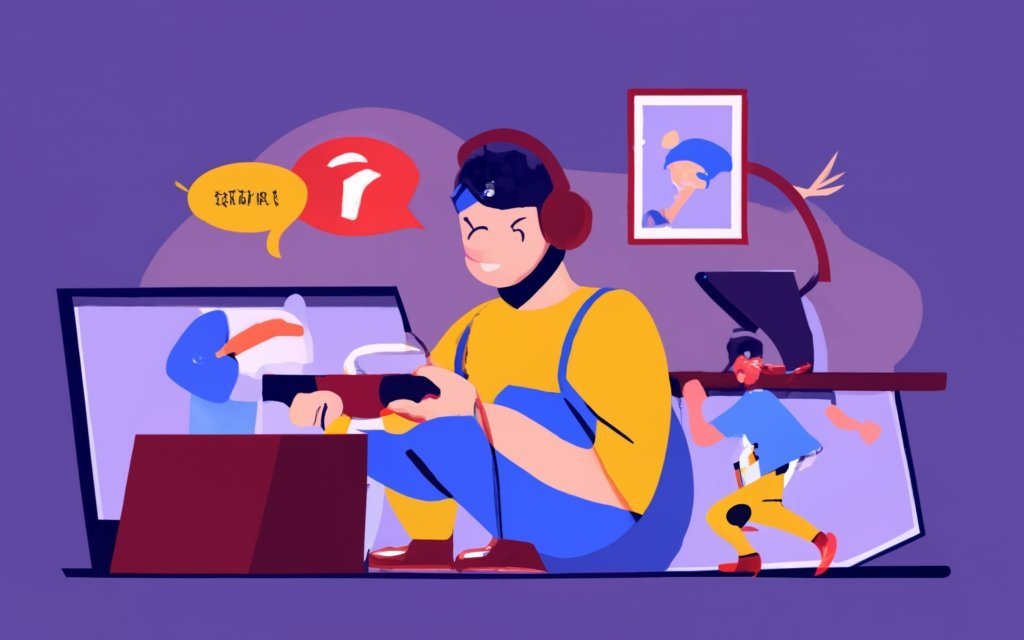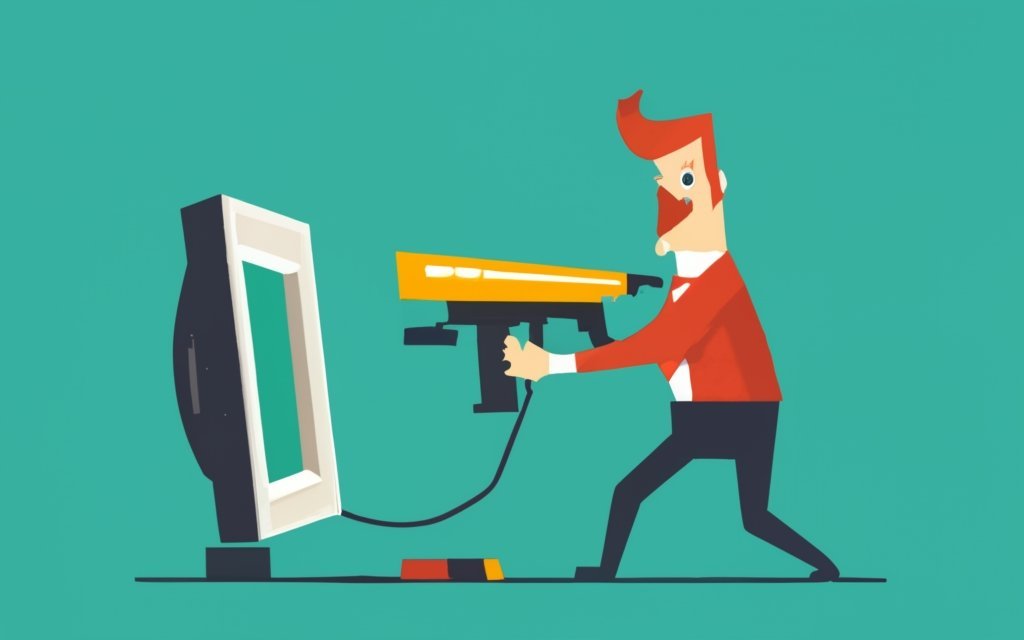The phenomenon of desensitization to violence in video games is a topic of increasing concern in the field of psychology and neuroscience. This desensitization is often observed in individuals who frequently play violent video games, where they seem to become habituated or ‘get used to’ the violence depicted in these games.
This can lead to a physiological numbness to real-world violence, as their reactions to scenes of real violence can differ significantly due to their exposure to violent video games.
The desensitization effect is further exacerbated by the marketing of video games, which often packages the content in ways that are not too threatening, creating positive emotional reactions that are incongruent with normal negative reactions to violence.
This makes the overall experience a pleasant one, leading to gradual increases in the consumption of increasingly threatening and realistic violence, but always in a way that is fun.
Importance of Discussing the Normalization of Violence in Video Games.
Discussing the normalization of violence in video games is crucial for several reasons. Firstly, it is important to understand the potential psychological impacts of this desensitization on players. Chronic exposure to violent video games has been linked to lasting harmful effects on brain function and behavior, including aggression.
Moreover, the desensitization to violence in video games can potentially lead to a societal normalization of violence. As the video game industry continues to grow and influence popular culture, the normalization of violence in video games can have a significant impact on the perception of violence in our society.
This can lead to a disconnect between the violent content in video games and the real-world consequences of violence, potentially contributing to a culture of violence.
In addition, understanding the desensitization effect can help in developing strategies to mitigate the potential negative impacts. For instance, it can guide the development of video games that promote empathy and positive behavior, and it can inform the creation of effective interventions to help players manage their aggression.
Lastly, discussing the normalization of violence in video games is also important from a policy perspective. It is a public policy question whether modern societies want this desensitization to continue. Policymakers can use this understanding to regulate the video game industry and promote a healthier portrayal of violence in video games.
II. The Relation of Violent Video Games to Adolescent Aggression.
Moderated Mediation Effect:
The relationship between violent video games and adolescent aggression is a complex one. According to the General Aggression Model (GAM), violent video games constitute an antecedent variable of aggressive behavior, i.e., the degree of exposure to violent video games directly leads to an increase in aggression.

However, other researchers have proposed alternative points of view, suggesting that violent video games have a minor influence on adolescent aggression. For instance, the Catalyst Model (CM) suggests that genetic predisposition can lead to an aggressive child temperament and aggressive adult personality.
Environmental factors act as catalysts for violent acts for an individual who have a violence-prone personality. This means that although the environment does not cause violent behavior, but it can moderate the causal influence of biology on violence.
Internal and External Factors.
Internal factors such as genetic predisposition and personality traits can significantly influence the relationship between violent video games and adolescent aggression.
Individuals with an aggressive temperament or an aggressive personality are more likely to produce violent behavior during times of environmental strain. Environmental factors act as catalysts for violent acts for an individual who have a violence-prone personality.
External factors such as peer influence, family violence, and exposure to violent media can also play a significant role in the development of aggressive behavior in adolescents.
For instance, exposure to violent video games, on the one hand, can predict adolescent aggression directly; on the other hand, it had an indirect effect on adolescent aggression via normative beliefs about aggression.
Too much violence in video games makes it easy for individuals to become accustomed to violence and emotionally apathetic towards the harmful consequences of violence. Moreover, it can make individuals accept the idea that violence is a good way of problem solving, leading to an increase in normative beliefs about aggression.
Morality and Values.
Morality and values are also important factors in the relationship between violent video games and adolescent aggression. The exposure to violent video games can make individuals accept the idea that violence is a good way of problem solving, leading to an increase in normative beliefs about aggression. This can make individuals more likely to become violent or aggressive under certain situational cues.
Normative Beliefs about Aggression.
Normative beliefs about aggression are closely related to the relationship between violent video games and adolescent aggression. When exposure to violent video games changes by 1 standard deviation, adolescent aggression varies by 0.28 standard deviation, with 0.22 standard deviation being a direct effect of exposure to violent video games on adolescent aggression and 0.06 standard deviation representing the effect through normative beliefs about aggression.
Parental Monitoring:
Parental monitoring is another important factor in the relationship between violent video games and adolescent aggression. Parents play a crucial role in mediating the effects of violent video games on their children’s aggression.
The style of parental mediation can influence the children’s media violence exposure and aggression. For instance, parents who provide a supportive environment and engage in positive dialogue with their children about the content of violent video games can help mitigate the potential negative effects of violent video games on their children’s aggression.
III. Violent Video Games: Content, Attitudes, and Norms.
Causation Argument:
The causation argument is a contentious topic in the debate over violent video games. Some argue that violent video games are the primary cause of violent behavior, while others believe that the relationship is complex and influenced by a multitude of factors.

The American Psychological Association, for instance, has reaffirmed that there is a small, reliable association between violent video game use and aggressive outcomes, such as yelling and pushing.
However, these research findings are difficult to extend to more violent outcomes. They also note that violence is a complex social problem that likely stems from many factors that warrant attention from researchers, policymakers, and the public 7.
Violence in Other Media Genres.
It’s important to note that violence is not exclusive to video games. Violence is also prevalent in other media genres, such as movies, television shows, and literature.
Therefore, the issue of violence in video games should not be isolated from these other forms of media. Understanding the impact of violence in these different contexts can provide a more comprehensive understanding of the issue.
Power Norms and Norms of Appropriate Violence.
The design of violent video games often reflects power norms and norms of appropriate violence. These norms can influence the content of the games and the attitudes of the players towards violence.
For example, violent video games often represent violence as the best or only way to resolve conflict, which can normalize aggressive behavior and attitudes 10.
Design of the Game.
The design of violent video games can significantly impact the attitudes and norms of the players. For instance, games that depict violence in a realistic and graphic manner can desensitize players to the violence, leading to a normalization of violence. On the other hand, games that promote positive behavior and empathy can help mitigate the potential negative effects of violent video games.
Zealous Campaigns Against Violent Video Games.
There have been zealous campaigns against violent video games, often led by parents, policymakers, and public health organizations. These campaigns argue that violent video games are harmful and should be regulated.
However, these campaigns often overlook the fact that video games can also have positive effects, such as promoting problem-solving skills, creativity, and empathy. It’s important to strike a balance between regulating violent video games and promoting their positive aspects.
IV. APA Reaffirms Position on Violent Video Games and Violent Behavior.
Insufficient Scientific Evidence to Support a Causal Link.
The American Psychological Association (APA) has reaffirmed its position on the relationship between violent video games and violent behavior. The APA has stated that there is insufficient scientific evidence to support a causal link between violent video games and violent behavior.
This means that while there is a correlation between violent video games and increased aggression, there is not enough evidence to conclude that playing violent video games directly causes violent behavior.
Small, Reliable Association Between VVG Use and Aggressive Outcomes.
However, the APA has also noted a small, reliable association between violent video game use and aggressive outcomes, such as yelling and pushing. This means that while the relationship is not direct or causal, there is a consistent pattern of increased aggression in players who play violent video games. This association is small, but it is reliable, meaning that it is consistent across multiple studies and over time.
Other Factors That Warrant Attention.
The APA also noted that violence is a complex social problem that likely stems from many factors that warrant attention from researchers, policymakers, and the public. These factors include, but are not limited to, genetic predisposition, personality traits, peer influence, family violence, and exposure to violent media.

Therefore, while the APA acknowledges the relationship between violent video games and increased aggression, it also emphasizes the need to consider other factors that may contribute to violent behavior.
V. Violent Video Games and Young People.
Measures to Assess Aggression.
Aggression in young people is typically assessed through a variety of methods. Some studies focus on self-reports of aggressive behaviors, such as hitting or pushing. Others use peer or teacher ratings to assess aggressive behaviors.
Some studies also measure the likelihood of an individual subjecting others to an unpleasant experience, such as exposure to a hot sauce or a loud noise, after playing violent video games.
However, it’s important to note that these measures are not perfect and can be influenced by a variety of factors, including the individual’s interpretation of the question and the observer’s perception of the behavior.
Potential Harm.
While some researchers argue that violent video games can contribute to real-life violent behavior and harm children in other ways, others challenge the validity or applicability of much of the research supporting this view.
They argue that most youths are not affected by violent video games. However, both sides of this debate agree on the potential negative effects of violent video games, including the possibility of desensitization to violence, nightmares, sleep problems, impaired school performance, and aggressive behavior.
Steps Parents Can Take to Protect Children.
Parents can take several steps to protect their children from the potential negative effects of violent video games. First, parents can limit the amount of time their children spend playing violent video games. Second, parents can monitor their children’s video game play and discuss the content of the games with their children.
Third, parents can encourage their children to play video games that promote positive behavior and empathy. Finally, parents can engage in positive dialogue with their children about the content of violent video games and the importance of treating others with respect and kindness.
AAP Policy Statement on Media Violence.
In its most recent policy statement on media violence, the American Academy of Pediatrics (AAP) cites studies that link exposure to violence in the media with aggression and violent behavior in youths. The AAP policy describes violent video games as one of many influences on behavior, noting that many children’s television shows and movies also contain violent scenes.
But the authors believe that video games are particularly harmful because they are interactive and encourage role-playing. As such, the authors fear that these games may serve as virtual rehearsals for actual violence.
The AAP also expresses concern that exposure to aggressive behavior or violence in video games and other media may, over time, desensitize youths by numbing them emotionally, cause nightmares and sleep problems, impair school performance, and lead to aggressive behavior and bullying.
VI. Latest Developments.
Recent Studies on the Effects of VVGs.
Recent studies have provided a more nuanced view of the effects of violent video games (VVGs). Some researchers have challenged the popular view that VVGs are harmful, arguing that many studies on the issue of media violence rely on measures to assess aggression that don’t correlate with real-world violence. Furthermore, many are observational approaches that don’t prove cause and effect.
Federal crime statistics suggest that serious violent crimes among youths have decreased since 1996, even as video game sales have soared. This suggests that the relationship between VVGs and violent behavior may not be as direct or causal as previously thought.
The Role of Virtual Reality in VVGs.
The role of virtual reality (VR) in VVGs is also a topic of interest. Immersive virtual environments, popularly known as VR, are mediated environments created with digital devices that present rich layers of sensory information so that users may see, hear, and feel as if they are in the physical world. VR experiences tend to elicit a higher level of presence perception than media experiences through more traditional platforms.
These findings suggest that experiences in VR better mimic firsthand experiences in the physical world than any other existing platform. To date, very little work in VR has looked directly at violence or violence prevention, and some of this work is conflated with a focus on VR video games.
However, this is changing rapidly with the introduction and adoption of accessible and affordable consumer-grade VR devices and an accompanied growth of content, some of which can depict violence with rich layers of sensory information and contextual details.
The Impact of VVGs on Mental Health.
The impact of VVGs on mental health is another area of concern. Some studies have found that playing violent video games for extended periods can have detrimental effects on mental health. However, other studies have found no detrimental effects of violent video gameplay.
This suggests that the relationship between VVGs and mental health may be complex and influenced by a variety of factors, including the individual’s personality, situation, and motivation. It’s important to consider the impact of video games within these three broad domains when assessing the potential impact of VVGs on mental health.
VII. Conclusion.
Summary of Key Points.
In this discussion, we have explored the complex relationship between violent video games (VVGs) and their potential impact on players, particularly adolescents. We have discussed the desensitization effect, the moderated mediation effect, the role of internal and external factors, morality and values, normative beliefs about aggression, and parental monitoring.
We have also considered the APA’s position on the relationship between VVGs and violent behavior, the potential harm VVGs can cause, and the steps parents can take to protect their children. Finally, we have looked at the latest developments in the field, including recent studies on the effects of VVGs, the role of virtual reality in VVGs, and the impact of VVGs on mental health.
Call to Action for Game Developers, Parents, and Policymakers.
While the research on the impact of VVGs is complex and multifaceted, it is clear that more needs to be done to understand this relationship and to mitigate any potential negative effects. Game developers should strive to create games that promote positive behavior and empathy, and that do not desensitize players to violence.
Parents should engage in positive dialogue with their children about the content of violent video games, and should monitor their children’s video game play. Policymakers should use their understanding of the relationship between VVGs and violent behavior to regulate the video game industry and promote a healthier portrayal of violence in video games.
Future Directions for Research on the Normalization of Violence in Video Games.
The future of research on the normalization of violence in video games lies in a more nuanced understanding of this complex relationship. This includes a more comprehensive understanding of the factors that contribute to the desensitization effect, a deeper exploration of the role of virtual reality in VVGs, and a more in-depth examination of the impact of VVGs on mental health.
Researchers should also continue to monitor the relationship between VVGs and violent behavior, and to evaluate the effectiveness of interventions aimed at mitigating the potential negative effects of VVGs. You should read another article i wrote about >>>> Desensitization to Violence From Video Games to learn more.






